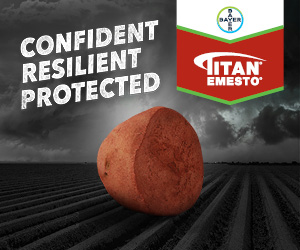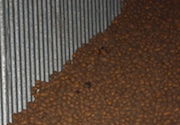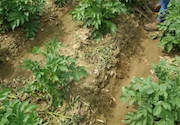| |
| |
 |
| |
 |
|
December 28, 2018 |
|
| |
Our top stories of the year updated producers on the progress of potatoes, whether it was that potatoes were progressing well despite heat stress, hail and frost concerns or that lower than average yields were expected across Canada. The top story of 2018 is a culmination of the season: the latest estimate from the United Potato Growers of Canada showing that overall potato production dropped by 2.6 per cent.
» Read more...
In October, Health Canada proposed to cancel all uses of mancozeb fungicide, removing the initial exception that allowed for foliar application on potatoes. There is still time for producers to participate in the consultation process for the revised mancozeb decision which is ongoing and will close on Jan. 3, 2019.
» Read more...
Once late blight – a concerning and costly disease – was found in a field near Alliston, Ont., it became a top story. The strain found was identified as US-23, a new strain gaining prevalence across 90 per cent of Canada and the United States, due to possible spread from infected tomatoes in backyard gardens. Thankfully, the disease in this particular case did not spread beyond its localized area.
» Read more...
|
| |
|
| |

With its highly visible and easy to apply unique red formulation, your potato crop will be protected against the widest range of insects, like Colorado potato beetle and aphids. You’ll also be protected against all major seed-borne diseases such as rhizoctonia and silver scurf. Titan ® Emesto ® even provides two modes of action against fusarium – including current resistant strains.
» Learn more... |
| |
|
| |
 After a wet harvest season there may be temptation to over-ventilate, out of fear of condensation or hot spots. However, ventilation should be kept to a minimum to prevent unnecessary weight loss and increased power costs. Crop condition, end use of the crop, and airflow capacity will help determine the optimal ventilation schedule for your spuds.
» Read more...
After a wet harvest season there may be temptation to over-ventilate, out of fear of condensation or hot spots. However, ventilation should be kept to a minimum to prevent unnecessary weight loss and increased power costs. Crop condition, end use of the crop, and airflow capacity will help determine the optimal ventilation schedule for your spuds.
» Read more... |
| |
 Does a cold, wet harvest increase the risk of any particular storage concerns? What should producers keep in mind when preparing for storage after a difficult harvest year? Khalil Al-Mughrabi, pathologist at the Potato Development Centre in New Brunswick, shares his answers for producers.
» Read more...
Does a cold, wet harvest increase the risk of any particular storage concerns? What should producers keep in mind when preparing for storage after a difficult harvest year? Khalil Al-Mughrabi, pathologist at the Potato Development Centre in New Brunswick, shares his answers for producers.
» Read more... |
| |
 If you don’t plant it, you don’t get it – the best management efforts to control Dickeya must start with seed. Dickeya in potatoes is primarily spread through infected seed and a growing number of seed growers and buyers are choosing to test potato seed lots for the pathogen. Growers are encouraged to select seed that’s been tested and confirmed to be free of Dickeya.
» Read more...
If you don’t plant it, you don’t get it – the best management efforts to control Dickeya must start with seed. Dickeya in potatoes is primarily spread through infected seed and a growing number of seed growers and buyers are choosing to test potato seed lots for the pathogen. Growers are encouraged to select seed that’s been tested and confirmed to be free of Dickeya.
» Read more... |
| |
|
| |
|
|
| |
| |





